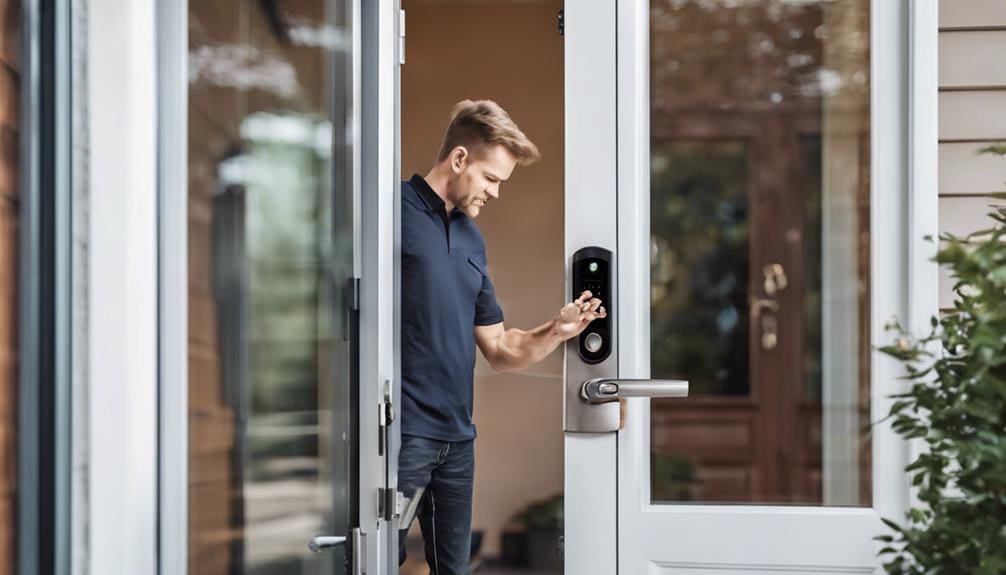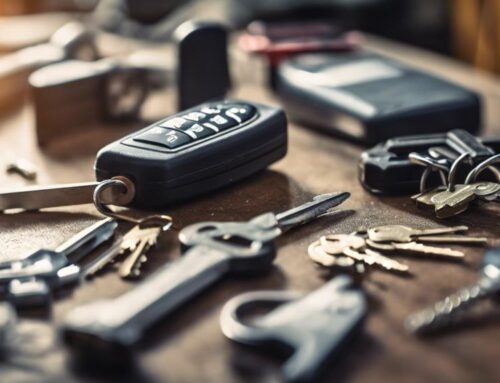To enhance your home or business security, begin by evaluating your current measures. Inspect all entry points, guarantee proper lighting, and maintain security systems. Upgrade to high-security locks, such as Grade 1 ANSI-rated models with patented key controls. Install high-definition security cameras with night vision and remote access. Implement access control systems using keycards or biometrics for regulated entry. Lastly, schedule routine security audits with a professional locksmith to uncover vulnerabilities and update your systems. For detailed tips and expert guidance, there’s plenty more to explore.
Key Takeaways
- Conduct a thorough assessment of current security measures to identify and address vulnerabilities.
- Invest in high-security, Grade 1 ANSI-rated locks with patented key control systems.
- Install high-definition security cameras with night vision and remote access capabilities.
- Implement an access control system with keycards, biometric scanners, or mobile credentials for regulated entry.
- Schedule regular security audits and updates to ensure systems are functioning correctly and effectively.
Assess Current Security Measures
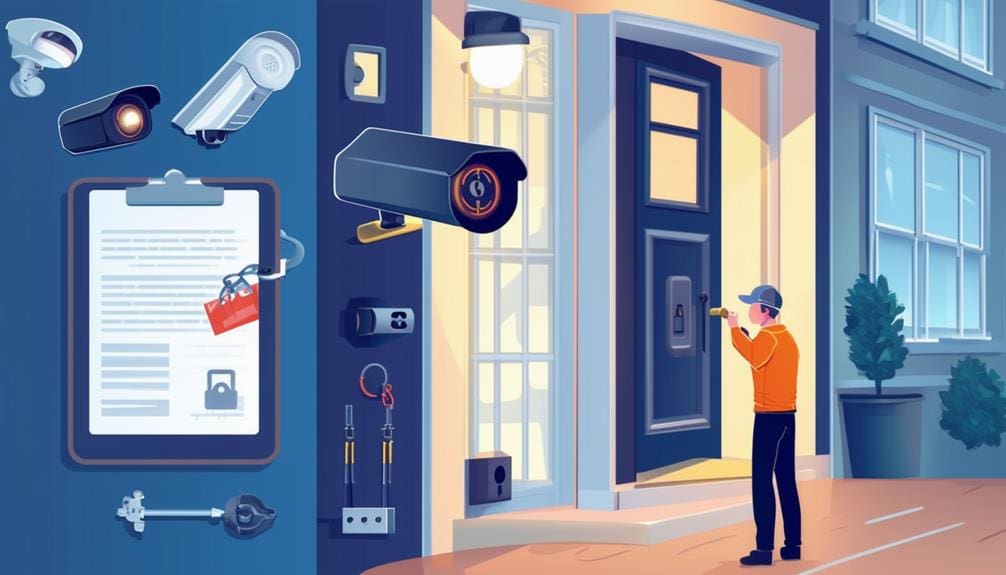
To start improving your home security, you should first conduct a thorough assessment of your current security measures. Begin by examining all entry points, including doors, windows, and any other potential access points. Check for any weaknesses such as flimsy door frames, loose hinges, or outdated locking mechanisms. It’s important to verify that all doors and windows close and lock properly.
Next, evaluate your property’s exterior. Look at the lighting around your home; well-lit areas can deter potential intruders. Consider motion-activated lights for key spots like entrances and pathways. Additionally, inspect your landscaping. Overgrown bushes and trees can provide cover for criminals, so trim them regularly.
You should also review any existing security systems. Test your alarm system to ensure it’s functioning correctly. If you have security cameras, check their placement and make sure they’re operational. Regular maintenance of these systems is vital for them to be effective.
Upgrade to High-Security Locks
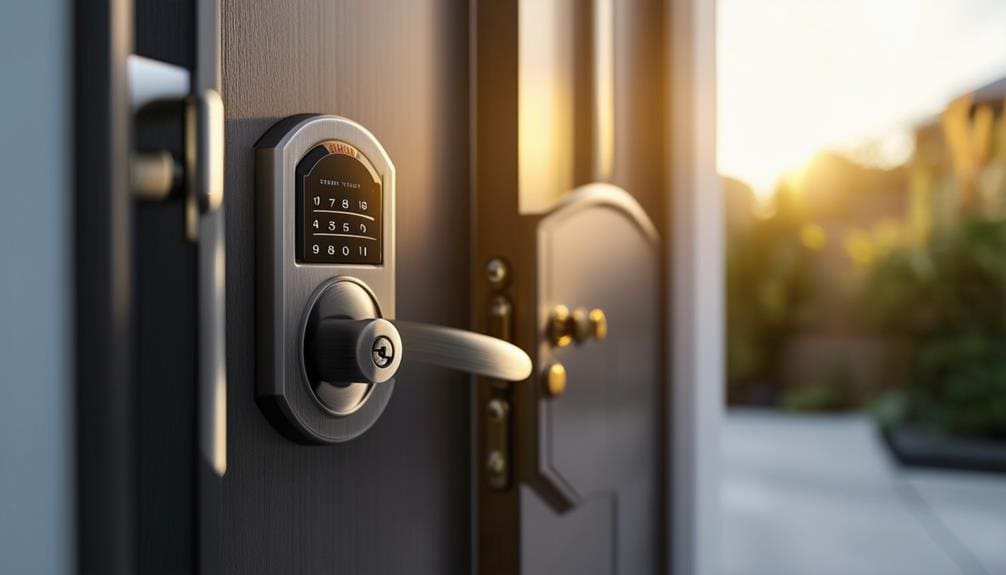
Upgrading to high-defense locks greatly enhances your home’s protection against unauthorized entry. High-defense locks are designed with advanced features that make them nearly impossible to pick, bump, or drill. By investing in these locks, you take a proactive step in strengthening your property’s first line of defense.
Look for locks that are rated by the American National Standards Institute (ANSI) with a Grade 1 classification. These are the most robust and durable options available. Additionally, consider locks with patented key control systems. These keys can’t be duplicated without your explicit permission, guaranteeing an added layer of security.
When choosing high-defense locks, opt for those with features like reinforced cylinders and anti-drill plates. These components resist common break-in techniques. Don’t overlook smart locks with encryption capabilities, either. They offer the convenience of keyless entry while maintaining high security standards.
For businesses, consider high-defense deadbolts and access control systems. These solutions can be integrated with existing security protocols, providing all-encompassing protection. Always consult with a professional locksmith to make sure the locks are installed correctly and to receive tailored advice for your specific needs.
Install Security Cameras
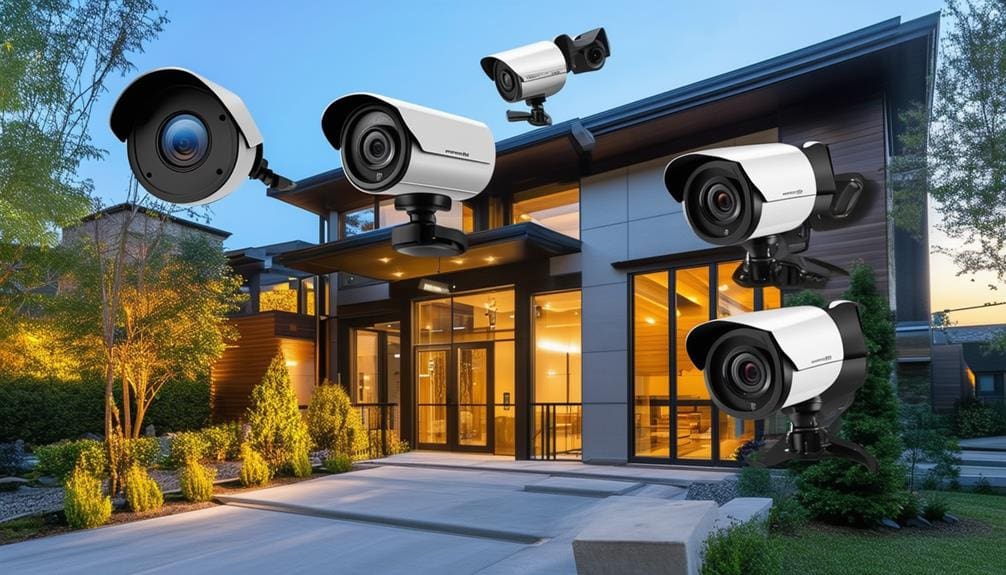
Installing security cameras significantly enhances your ability to monitor and protect your property against potential threats. Strategically placing cameras at entry points, parking lots, and common areas provides extensive coverage and acts as a deterrent to would-be intruders. Opt for high-definition cameras with night vision to guarantee clear footage, even in low-light conditions.
Invest in a system with remote access capabilities, allowing you to monitor your property from anywhere using a smartphone or computer. This feature is vital for immediate response, whether you’re at home, at work, or on vacation. Confirm your cameras have motion detection and instant alert functionalities to notify you of any unusual activity in real time.
Hardwired cameras offer better reliability and are less susceptible to interference compared to wireless options. However, if installation flexibility is a priority, choose wireless cameras with strong encryption protocols to prevent hacking attempts. Regularly maintain and update your security camera software to protect against vulnerabilities.
Integrate your cameras with other security measures, like alarm systems, for a layered defense strategy. By doing so, you not only capture potential incidents but also trigger immediate actions to mitigate risks. Your proactive approach in installing security cameras strengthens your control over your property’s safety.
Implement Access Control Systems
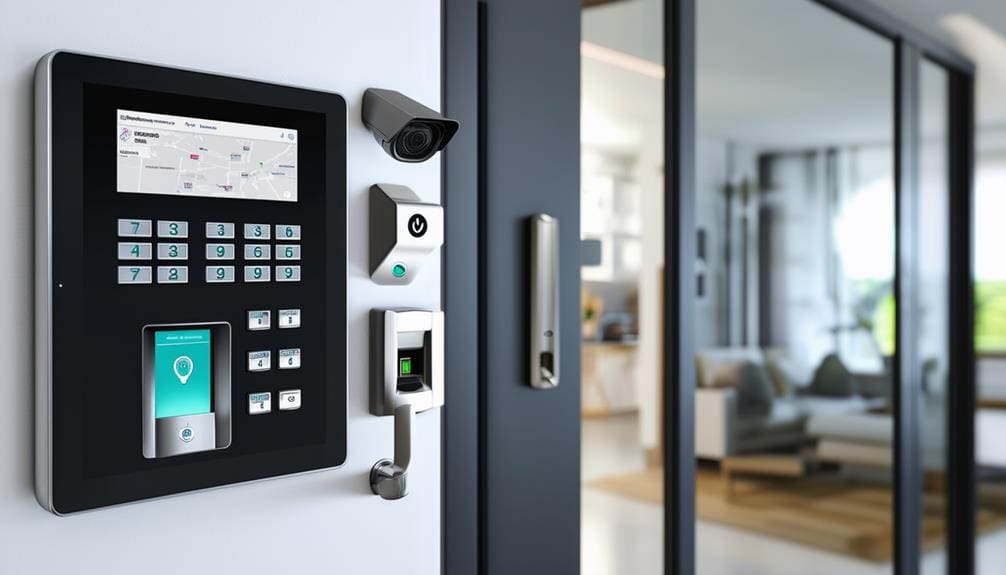
Enhancing your property’s security with access control systems allows you to regulate who enters and exits, making sure only authorized individuals gain entry. Modern access control systems offer various methods such as keycards, biometric scanners, and mobile credentials. These systems not only fortify security but also provide you with detailed logs of entry and exit times, essential for maintaining oversight.
When selecting an access control system, consider the following options:
| Method | Advantages | Considerations |
|---|---|---|
| Keycards | Easy to manage and distribute | Vulnerable to loss or theft |
| Biometric Scanners | High security with unique identifiers | Higher initial cost, privacy concerns |
| Mobile Credentials | Convenient and versatile | Requires smartphone, battery life |
Keycards are simple and cost-effective but can be lost or stolen. Biometric scanners offer unmatched security since they’re based on unique physical traits. However, they come with higher costs and potential privacy issues. Mobile credentials are gaining popularity due to their convenience, though they depend on the user’s smartphone.
Implementing an access control system isn’t just about installing hardware. Integrate software that provides real-time monitoring and alerts. Regularly update access permissions and perform system maintenance to ensure best performance. By investing in a robust access control system, you’re not just securing your assets but also exercising control over who can access your spaces.
Schedule Regular Security Audits

To maintain the effectiveness of your access control system, it’s important to schedule regular security examinations. These audits will help you identify vulnerabilities before they become serious risks. By conducting systematic reviews, you make sure that your security measures are always one step ahead of potential intruders.
Start by hiring a professional locksmith to perform a thorough assessment of your current security setup. They’ll evaluate locks, entry points, surveillance systems, and access control mechanisms. A detailed report will pinpoint areas that need immediate attention and provide actionable recommendations. Regular audits should be done at least annually, but in high-risk environments, consider quarterly evaluations.
Don’t overlook the importance of updating your security technology. Threats evolve, and so should your defenses. Make certain that your access control software is up-to-date and that any physical security measures, like locks and alarms, are in peak condition. Testing these systems periodically can prevent malfunctions at critical moments.
Involve your employees or household members in the process. Training them to recognize security risks and respond appropriately adds an extra layer of defense. Remember, a proactive approach to security examinations doesn’t just protect your assets; it also establishes a sense of control and peace of mind.
Frequently Asked Questions
How Can I Secure My Windows Against Break-Ins?
Upgrade your windows with reinforced glass or polycarbonate. Install window locks and security film. Don’t neglect window sensors connected to an alarm system. Combine these methods, and you’ll reduce the risk of break-ins.
What Are the Best Types of Alarm Systems for Homes?
You should invest in a smart alarm system with mobile app integration, real-time alerts, and professional monitoring. Make sure it includes door/window sensors, motion detectors, and security cameras. A system like ADT or SimpliSafe offers robust protection.
Should I Use Smart Doorbells for Added Security?
Absolutely, you should use smart doorbells—they’re like having a bouncer with X-ray vision. They provide real-time alerts, video footage, and two-way communication, elevating your control and security to an entirely new level of power.
How Do I Reinforce My Garage Door?
To reinforce your garage door, install a sturdy bar lock and upgrade to heavy-duty hinges. Add a steel plate to the door’s interior for extra strength. Don’t forget to secure the emergency release with a zip tie.
Are Motion Sensor Lights Effective for Security Purposes?
Absolutely, motion sensor lights are effective. They deter potential intruders by illuminating dark areas, making it harder for them to approach unnoticed. Install high-quality sensors with wide coverage to maximize your property’s security and control.
Conclusion
In securing your space, smart steps make a significant difference. Start by scrutinizing current safeguards, then step up with superior security solutions like sturdy locks and strategic surveillance. Smartly set up access control systems and schedule security audits to stay sharp. These practical, professional practices protect your premises, providing peace of mind. Remember, robust routines and reliable resources really reinforce your security, ensuring your home or business stays safe and sound.

